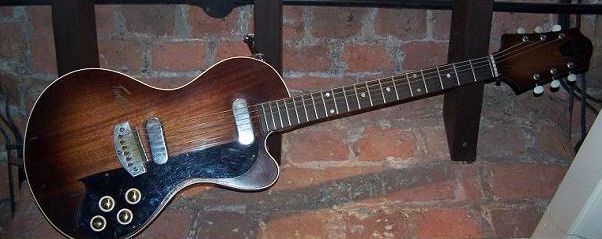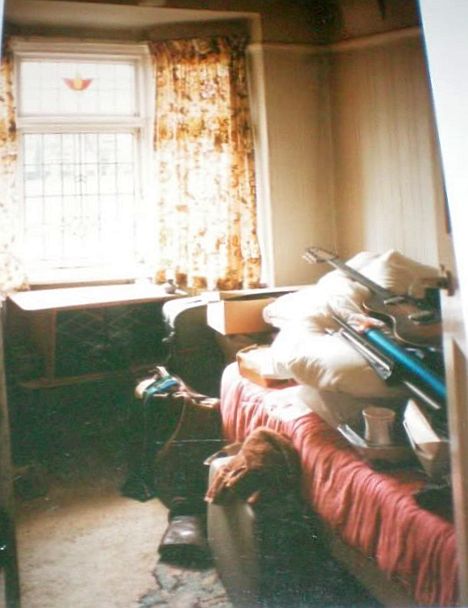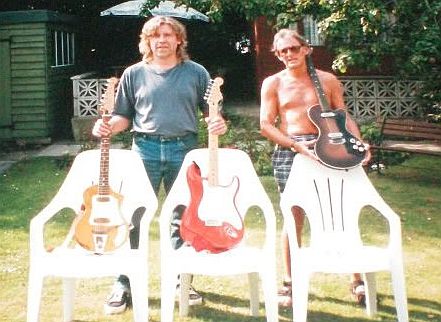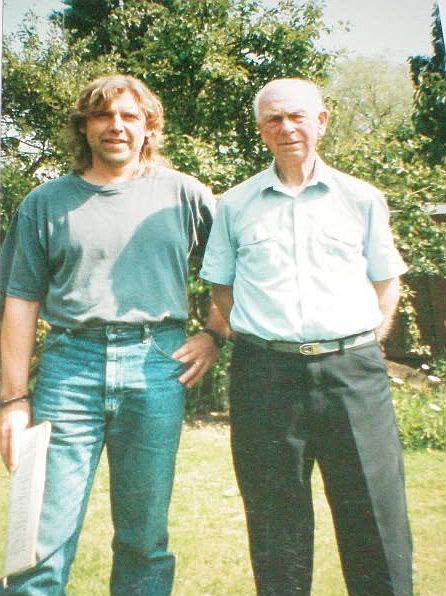The Guitars
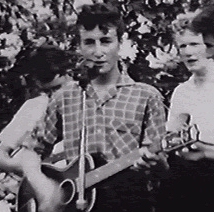 1957: Gallotone Champion acoustic
guitar. Lennon bought this 3/4-size guitar by
mail for about £10 after seeing an advertisement
in Reveille magazine. Made by
the Gallo company of South Africa, it was "Guaranteed
Not to Split." Banjo player and sympathetic
spirit Julia Lennon allowed her son's new guitar to be
delivered to her house, rather than that of
disapproving Aunt Mimi. The lad started a band,
the Black Jacks, with his mate Pete Shotton. His
mother had shown him a few five-string banjo chords,
so Lennon played the guitar with the sixth string left
slack. With the addition of a few more members he
rechristened the group the Quarry Men, and it was that
outfit that played the St. Peter's Parish Fete in
Woolton, Liverpool on 6 July 1957 when McCartney
entered the picture. Lennon wailed on this
beginner model until it broke the following
year. Whether the instrument -- made of
laminated woods -- actually "split" is undetermined. 1957: Gallotone Champion acoustic
guitar. Lennon bought this 3/4-size guitar by
mail for about £10 after seeing an advertisement
in Reveille magazine. Made by
the Gallo company of South Africa, it was "Guaranteed
Not to Split." Banjo player and sympathetic
spirit Julia Lennon allowed her son's new guitar to be
delivered to her house, rather than that of
disapproving Aunt Mimi. The lad started a band,
the Black Jacks, with his mate Pete Shotton. His
mother had shown him a few five-string banjo chords,
so Lennon played the guitar with the sixth string left
slack. With the addition of a few more members he
rechristened the group the Quarry Men, and it was that
outfit that played the St. Peter's Parish Fete in
Woolton, Liverpool on 6 July 1957 when McCartney
entered the picture. Lennon wailed on this
beginner model until it broke the following
year. Whether the instrument -- made of
laminated woods -- actually "split" is undetermined.
Long thought missing, this guitar
recently turned up and was auctioned through
Sotheby's. The auction house called on original
Quarrymen member Rod Davis to help authenticate the
guitar, and in a Liverpool Echo story
he remembers that when the band played that famous
fete "John took the skin off the edge of his index
finger while playing," and when Davis changed one of
the strings on Lennon's guitar, he noticed a spot of
blood inside. So Davis recounted that
story to Sotheby's and advised them to look inside for
the spot, and "although faint, it was still
there." 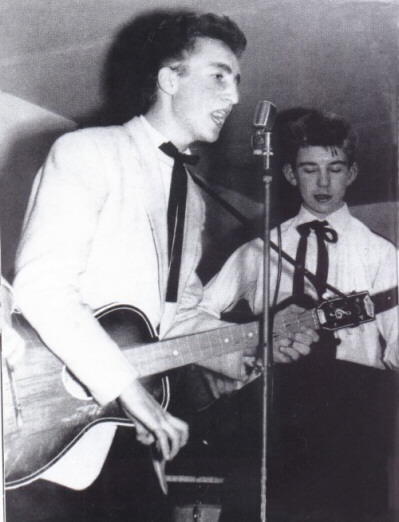
So where has it been all these
years? In its auction coverage, the Times
of London reported that "when the Beatles
became successful, Lennon left the guitar in the care
of his guardian, Aunt Mimi. After his murder,
she gave it to a family friend who had a disabled son.
When the boy died, it was passed to another disabled
friend, who is now in her twenties. Her stepfather
sold it to safeguard her future."
The Sotheby's catalogue adds that "a
percentage of the proceeds from the sale of this lot
will be donated to the Olive Mount Learning
Disabilities Directorate, Liverpool."
Interestingly, it also includes excerpts of an undated
document accompanying Mimi Smith's donation: "Her
typewritten and signed letter, sent from her home in
Sandbanks, Poole, states, 'With regards to the request
for items in support of your Liverpool handicapped
musicians appeal, most requests I have to refuse,
however, in this case I feel able to make an exception
. . . The poor old guitar was in such a state when I
found it I had it professionally repaired . . . I hope
that through you John's possessions can bring pleasure
. . .' " The guitar, which was auctioned
together with the trunk it sat in for years, now
sports a brass plaque Mimi had mounted on the
headstock memorializing her advice to the young,
guitar-happy Lennon: "Remember, you'll never earn your
living by it."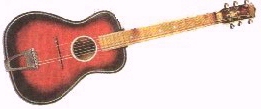
So whence this
mythic instrument? An anonymous bidder later
identified as a "private collector" named Adam
Sender got it for £155,000 (about
$250,000). In the fall of 2000
this guitar went on display at Boston's Museum of
Fine Art.
|
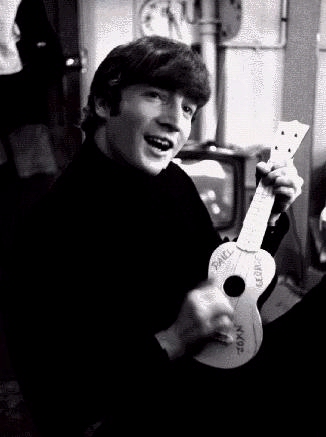 Despite
his
status as master songwriter and cultural icon, John
Lennon (1940-1980) was, first, a guitar player.
Despite
his
status as master songwriter and cultural icon, John
Lennon (1940-1980) was, first, a guitar player.
 1957: Gallotone Champion acoustic
guitar. Lennon bought this 3/4-size guitar by
mail for about £10 after seeing an advertisement
in Reveille magazine. Made by
the Gallo company of South Africa, it was "Guaranteed
Not to Split." Banjo player and sympathetic
spirit Julia Lennon allowed her son's new guitar to be
delivered to her house, rather than that of
disapproving Aunt Mimi. The lad started a band,
the Black Jacks, with his mate Pete Shotton. His
mother had shown him a few five-string banjo chords,
so Lennon played the guitar with the sixth string left
slack. With the addition of a few more members he
rechristened the group the Quarry Men, and it was that
outfit that played the St. Peter's Parish Fete in
Woolton, Liverpool on 6 July 1957 when McCartney
entered the picture. Lennon wailed on this
beginner model until it broke the following
year. Whether the instrument -- made of
laminated woods -- actually "split" is undetermined.
1957: Gallotone Champion acoustic
guitar. Lennon bought this 3/4-size guitar by
mail for about £10 after seeing an advertisement
in Reveille magazine. Made by
the Gallo company of South Africa, it was "Guaranteed
Not to Split." Banjo player and sympathetic
spirit Julia Lennon allowed her son's new guitar to be
delivered to her house, rather than that of
disapproving Aunt Mimi. The lad started a band,
the Black Jacks, with his mate Pete Shotton. His
mother had shown him a few five-string banjo chords,
so Lennon played the guitar with the sixth string left
slack. With the addition of a few more members he
rechristened the group the Quarry Men, and it was that
outfit that played the St. Peter's Parish Fete in
Woolton, Liverpool on 6 July 1957 when McCartney
entered the picture. Lennon wailed on this
beginner model until it broke the following
year. Whether the instrument -- made of
laminated woods -- actually "split" is undetermined.


